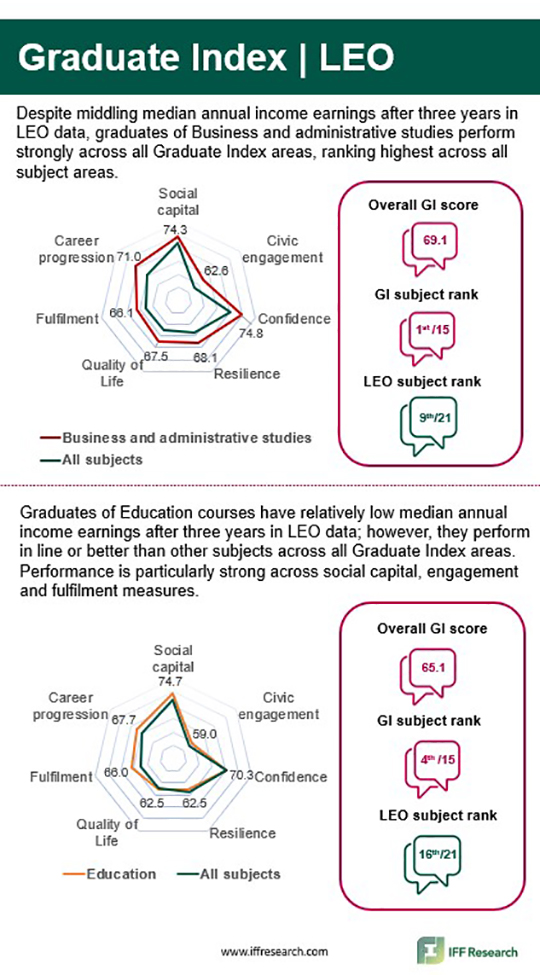
The Longitudinal Educational Outcomes (LEO) is an important dataset within higher education. But, the concern with viewing it in isolation is that it is only one indicator of graduate success. In fact, for many institutions salary data may not even be a vital indicator for success at all. Some institutions may never perform strongly in LEO data given the occupations their students are interested in pursuing, e.g. where specialism is in Creative and Performing Arts or Health and Social Care. The same story can be told at a departmental level within almost all institutions. However, given LEO’s prevalence in the sector, it is important for institutions to demonstrate to potential students that they can deliver good outcomes, outside of salary.
In comparing our pan-sector Graduate Index findings with LEO data from graduates 3 years after graduation, it is clear that lower annual salaries do not always correspond with low scores in Graduate Index areas – with scores often aligning with or surpassing higher earning peers across subject areas. Some examples of this analysis are shown in the infographic below:

NB. Analysis was conducted using 17/18 tax year LEO data (graduate cohort 13/14), and data from the Graduate Index pan-sector study. GI data included graduates who left HE 3 and 5 years ago to allow for more robust comparisons with LEO.